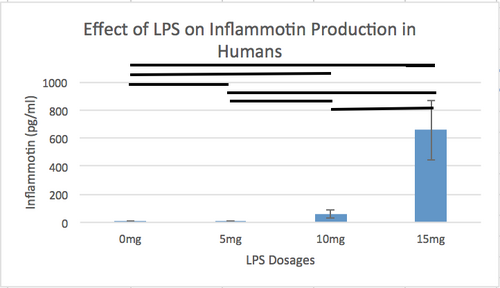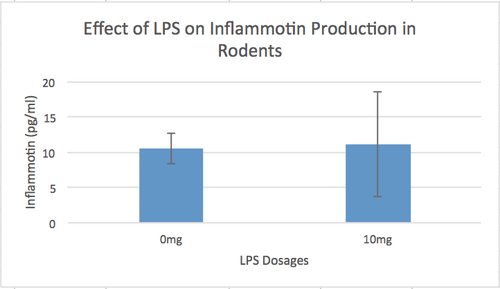BME100 f2014:Group10 L2
| Home People Lab Write-Up 1 | Lab Write-Up 2 | Lab Write-Up 3 Lab Write-Up 4 | Lab Write-Up 5 | Lab Write-Up 6 Course Logistics For Instructors Photos Wiki Editing Help | ||||||||||||||||||||||||||||||||||||||||||||||||||||||||||||||||||||
|
OUR TEAM
LAB 2 WRITE-UPDescriptive StatisticsHuman Study
Rodent Study
Results
AnalysisHuman Study
To be statistically significant, the p-value must be less than 0.00833
This shows that a statistically significant difference exists between all dosages. Rodent Study
Summary/DiscussionThe data showed that increased dosages of LPS increased inflammotin in humans in exponentially increasing increments based on dosage. Lipopolysaccharide had no effect during the rodent trials. This data shows that a greater amount of dosages should have been tested on rats. The lack of responsiveness from the rats could have been taken as a sign of the ineffectiveness of the drug, and its benefits to humans could have been overlooked. This data shows that different medications and treatments can have different effects on different organisms, so in vitro testing is extremely important to ensure that medications that can treat humans are not dismissed because of their lack of effectiveness in rodent studies. |
||||||||||||||||||||||||||||||||||||||||||||||||||||||||||||||||||||


